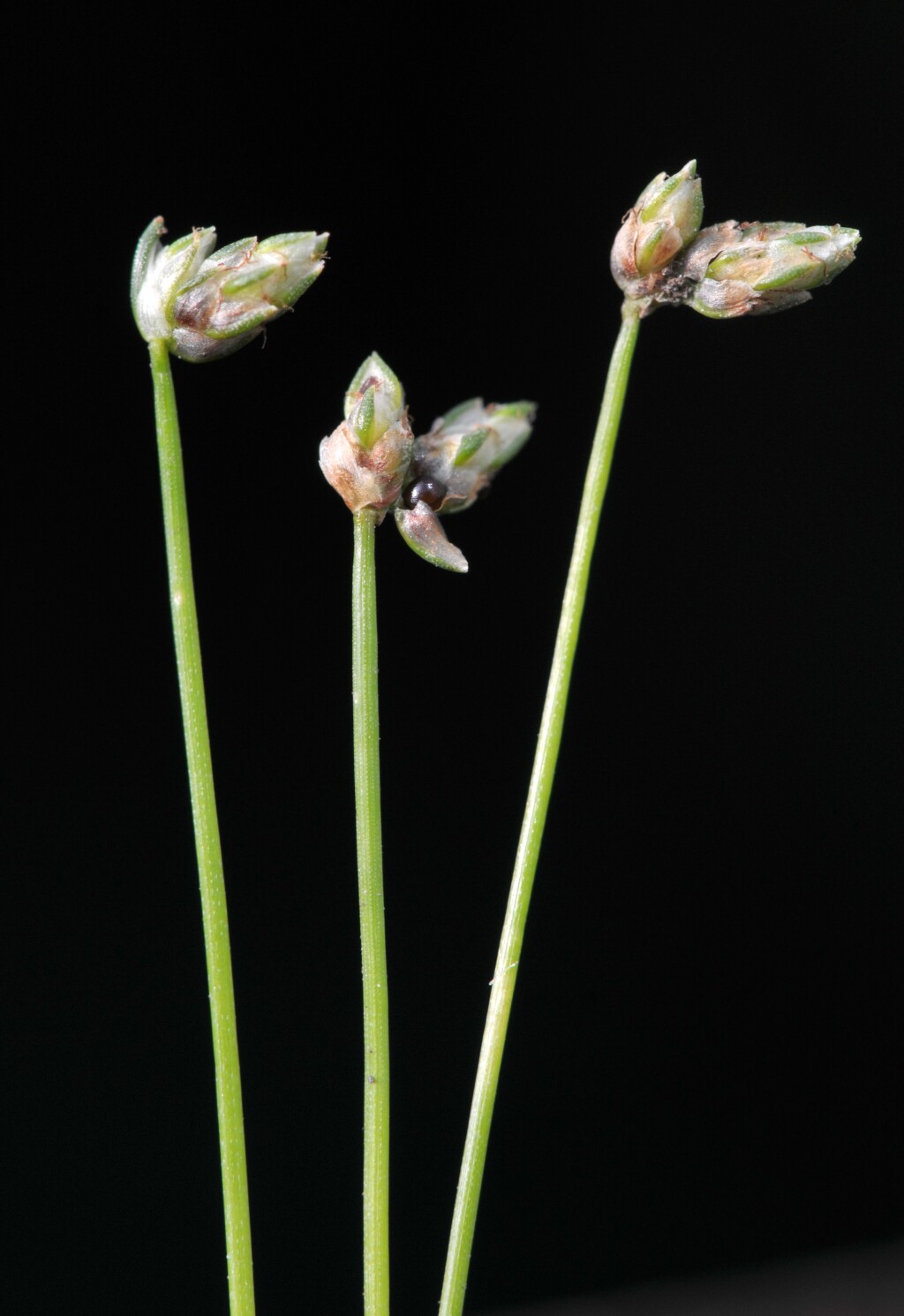Isolepis platycarpa
(S.T.Blake) SojákSmall tufted annual or possibly short-lived perennial. Culms filiform, 2–20 cm high. Leaves reduced, blades to 15 mm long. Spikelets 1 or 2, 2.5–4.5 mm long; involucral bract mostly exceeding inflorescence; glumes obtuse, sides irregularly but conspicuously 2–5-nerved, whitish or straw-coloured or tinged orange-brown or dark red-brown, 1–1.5 mm long; stamens 3; style 3-fid. Nut unequally trigonous to planoconvex, with rounded angles, broad-obovoid to obovoid or broad-ellipsoid, minutely reticulate, glistening, dark brown to black, from one-half to two-thirds as long as glume, 0.5–0.8 mm long, 0.5–0.7 mm diam. Flowers spring–summer.
LoM, MuM, Wim, GleP, Brid, VVP, VRiv, RobP, MuF, GipP, OtP, WaP, Gold, CVU, GGr, DunT, NIS, EGL, EGU, WPro, HSF, HNF, OtR, Strz, MonT, VAlp. Also WA, SA, NSW, Tas., Norfolk Is. New Zealand. Largely coextensive with Isolepis hookeriana and sometimes occurring in mixed populations with it, possibly with a greater tolerance for environmental extremes.
Close to Isolepis cernua, and the boundary between these two species is not clear; hybrids or intergrades may occur. The nut is smaller than in I. cernua, with the angles more rounded and the surface darker with larger reticulations. The glumes generally have whitish, mostly narrower sides (c. 0.5 mm wide; cf. 0.5–0.8 mm wide in I. cernua) and tend to be more acute and more strongly folded.
 Spinning
Spinning

